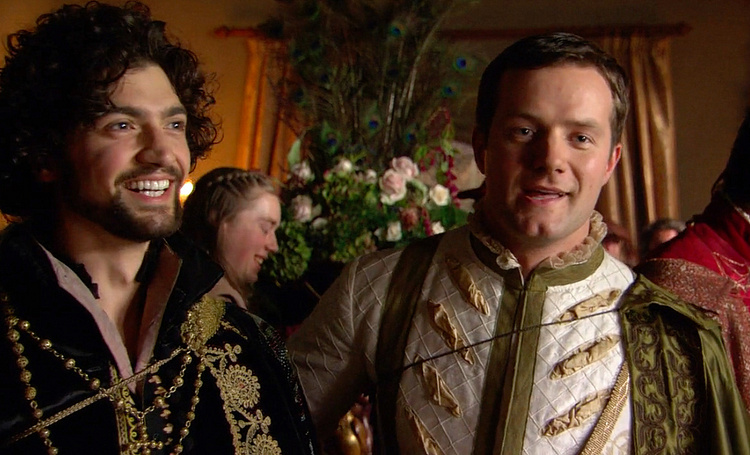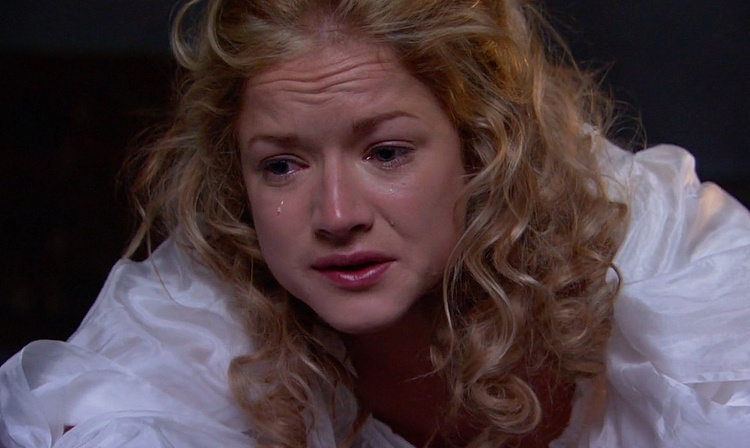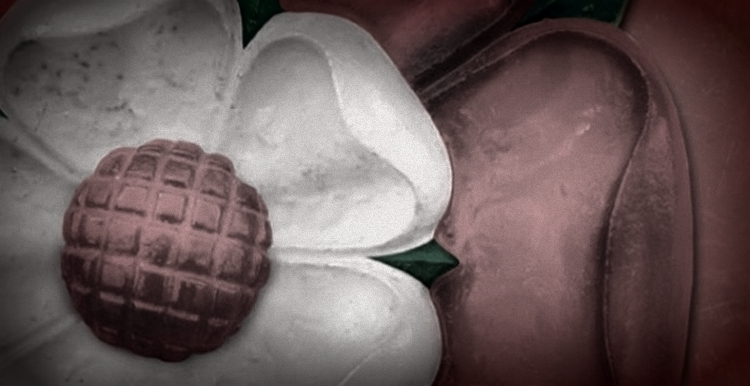There was a time, not that long ago, when I was enthusiastic about arguing every detail, and examining every possible scenario, when writing an article. Very recently I caught myself laughing, at myself, at one of my old articles, at what I now perceive as an absurd attention to detail, in attempting to cover every single thing that may ever have been said in all of time about a historical figure, and making sure I had a rebuttal for it. I am not sure I will always be able to maintain that patience and enthusiasm. In the ten years I have been reading and writing history, I have learned that public attitudes, in general, remain stagnant.
For a brief period last year, after the fourth season of The Crown aired, I watched the media insist people understand this was a fictional account and not to be taken as fact. I even saw a mild flurry of articles insisting that Queen Anne was heterosexual after Olivia Coleman won an Oscar for The Favourite. I saw no such consideration for royals, dead or alive, after Wolf Hall aired. It is obvious that the concern around The Crown was for the living, and the more recently departed, and that this may cause offence or pain. But there’s little reason The Favourite, as a black comedy, should have caused so much concern about Queen Anne. That Queen Anne may not have been dead for as long as Anne Boleyn has, but surely after a century or two, historical figures are fair game? Well, are they? Or should we be affording someone five-hundred years deceased the same ethical treatment as one dead only twenty years? Are living relatives the only concern? Or is there a fundamental evil when humans are dehumanised for the sake of entertainment?
Repeating historical errors based on stereotypes entrenches harmful social biases. An obvious example is the public caricatures of six women, the six consorts of Henry VIII, most of whom can be neatly fitted into a conveniently full measure of archetypes that embellish the narrative of a gaudy, notorious tyrant. But it is not only Henry’s wives who suffer, almost all of the figures of interest at the Tudor court have been subject to some silly treatment or another. Regular readers will know about my interest in Jane Boleyn, the villain-iest villainess of them all, according to some, well, according to most, because no matter how many historians and writers take up her cause, people will still cling to their visions of Jane peering through keyholes and triumphantly engineering her husband’s downfall. Lately, since the 90s at least, her husband has been growing in reputation as a sexual deviant, with charges from hiding in closets and peeping on his sister to the anal rape of his wife on their wedding night – and interestingly, this has not grown from the historical incest charges, but from a modern and unproven theory that George Boleyn was bisexual. In summary, the treatment of the Lord and Lady Rochford has been at best inaccurate, in the main, deeply misogynistic, and more recently, bigoted and homophobic.
This article probably would have escaped my notice had it not been sent to me, but sent to me it was, and it contains the usual laughable charges against Jane and George. It is difficult to engage with everything written about the Rochfords, it is wearisome, like a constant foul sexist stench that pervades Tudor writing. Does it matter, in the grand scheme of things, in all of the world-building events that happened over a century of Tudor reign? Does one unimportant woman matter? Yes, she does matter. Popular history is needed, however, some think popular history means ‘entertainment’. Aren’t you talking down to the reader, if you think they are interested in history but not intelligent enough to read a factual story without the soap-opera elements? Pop history is not a new development, of course. Some 20th century popular historians had little compunction about embellishment and using facts out of context, because, before the internet, they could get away with it. Unfortunately it is those ‘interpretations’ that are often repeated.

The article, or, rather, press release, in question follows the same vein published in previous books by the same author, using the same theories. I will address them in written order. The first clue is in the title, “Wicked Wife”, alluding to George Wyatt’s description of Jane in his history of Anne Boleyn, and employing alliteration, a particularly effective rhetorical device. Wicked Wife rolls marvellously off the tongue, planting a firm image in the readers mind.
The first three paragraphs are innocuous enough, talking of the little we know of Jane’s early life. In the fourth paragraph, George Cavendish’s views are introduced. Cavendish is described as an “usher of the court”, as if he were a disinterested party, but he was, in fact, the devoted servant of Cardinal Wolsey, and therefore, not an unbiased source. Furthermore, while he wrote a history of Wolsey, the most heavily relied-upon work is Cavendish’s Metrical Visions, most often published alongside his Life and Death of Cardinal Wolsey. Metrical Visions is a poem of over 2000 stanzas in royal rhyme in which historical figures present themselves to Cavendish, the narrator, in a series of laments recounting the reasons for their death. It is not an attempt at a history. It borrows heavily from John Lydgate’s Fall of Princes. A.S.G. Edwards, who produced a scholarly edition of Cavendish’s text in the 1980s, questions Cavendish’s veracity as a historical source, questions his personal proximity to and personal intimacy with events after Wolsey’s death, notes there is no corroborating evidence for many of them, discusses Cavendish’s multiple historical errors and has examined the much-used Singer manuscript of 1825, (relied upon in many Tudor histories) which took great liberties with the original manuscript, unpublished in Cavendish’s lifetime. Edwards does state there are facts that are gleaned from Cavendish alone, of the neutral sort, the approximate birth date of George Boleyn, for example, but to try and identify historical facts from symbolic words is an imprecise practise at best, particularly without expertise in the literary discipline.
To address the keywords chosen; “that [Jane] had been brought up without a bridle and left to follow her lust and filthy pleasure, wasting her youth” casts a very strange aspersion on Jane’s respectable family and her career at court. Her father Lord Morley was a peer whose career started as a servant under Henry VIII’s grandmother Margaret Beaufort, and whose friendship with Mary Tudor only ended with his death. That Jane “had no respect for her marriage vows, and did not fear God” is merely a reflection upon Jane’s role in Katherine Howard’s downfall. It also contradicts the later claims in the article, that Jane’s alleged devotion to Catholicism turned her against her family. You may find in earlier historical fiction Jane is often depicted an an adulteress, which is clearly influenced by Cavendish. But our most reliable source on the Boleyns, Eustace Chapuys, made no mention of this, or George Boleyn’s alleged adulteries.
The fifth paragraph very cleverly takes one of the few incidents we have to demonstrate the nature of Jane’s relationship with her sister-in-law Anne Boleyn, in which Jane was banished from court for interfering with one of Henry’s mistresses during his marriage to Anne. The article claims this incident proves Jane’s “talent for plotting”. It neatly deflects from what we can factually glean from this incident, that Jane and Anne were obviously close and that Anne trusted Jane to intervene on her behalf. Rather than a misogynistic take on her “talent for plotting” we should see this as an example of Jane’s natural loyalty to her family.
Paragraphs five and six address the alleged appearance of Jane at a demonstration for Princess Mary, and her alleged arrest following it. Jane’s whereabouts at this point were unknown as she was still banished from court and we have no record of when she returned. However, the evidence is a marginal note next to the record of the incident, which simply reads “Millor de Rochesfort et millord de Guillaume”. Jane’s name is not mentioned, nor any woman’s. The letter states that ‘a great troop of citizens’ wives and others, unknown to their husbands, presented themselves before [Mary], weeping and crying that she was Princess, notwithstanding all that had been done.’ It is very doubtful Jane was part of this troupe of “citizens’ wives”. We don’t know when or why the marginal note was added. Moreover, the vast collection of documents that make up the heavily relied-upon Letters and Papers of Henry VIII, from which this document originates, is incomplete, the documents of perceived importance chosen by an editor, re-arranged from their original order into a chronological calendar. If there is an answer to the mystery of the note it may lie in a document that has been destroyed. However, in the absence of actual evidence, we have to consider what it logical. Is it logical that Jane being arrested and sent to the Tower would have escaped record? Chapuys was the one to report on her banishment, so it is doubtful. The idea is appealing probably because it was championed by eminent historian Eric Ives, yet, in his lauded biography of Anne Boleyn, he declares that Jane was “otherwise known as Anne’s enemy” when we have evidence that points to the contrary.

In paragraph seven, it is stated that “It may be that Jane was jealous of her husband’s close bond with his sister, so her breaking with his family makes sense.” Let me be blunt here, and state that it actually makes no sense at all to the logical mind. The logical mind would conclude that Jane’s loyalty lay with her husband, determined by the fact that Jane wore widow’s black for the rest of her life after her husband was executed, and petitioned Cromwell for the return of his belongings, including their marriage bed.
Paragraphs seven through eleven detail Lord Morley’s relationship with the Princess Mary and suggest that this influenced Jane’s behaviour. Jane had left her father’s household after her marriage, and was not beholden to him or his beliefs. It is far more likely she followed her husband’s lead, and George was devoted to religious reform, with Chapuys claiming “he could not refrain from” Lutheran discussion. But it is worth noting, that whatever Lord Morley’s feelings about Henry’s treatment of his daughter were, he remained a loyal peer and subject, even after Henry VIII judicially murdered his son-in-law and then his daughter. The execution of Bishop Fisher could hardly have impressed Jane to turn against her husband, and she, like her father, dutifully returned to court at her sovereign’s request and continued to serve his consorts after he had murdered her own husband, blackened his name and essentially ruined her life.
Paragraph twelve repeats the old refrain that Jane accused “George Boleyn of incest with his sister the Queen.” Again we can give this short shrift. There is no evidence Jane was even questioned (despite popular opinion to the contrary) or gave any testimony. She certainly did not testify at the trial. Eustace Chapuys, our best eye-witness of the trial, lamented that no witnesses were produced, and reported only that George’s “sister had told his wife” that Henry was impotent. That evidence may have been obtained from Anne or George themselves. The actual ‘evidence’ of Anne’s supposed adultery came from the convenient death bed confession of a deceased courtier.
It is also mentioned that “Some have tried to cast doubt on this, but reliable sources of the period, notably George Cavendish and George Wyatt…”. “Some”, are historians, perfectly adept at recognising reliable sources and identifying issues in historiography. George Wyatt was born well after Anne Boleyn’s death and wrote his historical account of her life as a rebuttal to Nicolas Sander’s account of Anne in Rise and Growth of Anglican Schism, the title indicating what cause the Catholic Sander was championing. Wyatt has similarly been called partisan in his account of Anne, which is flattering to the extreme, and there is a Wyatt family tradition that Anne Boleyn and the poet Thomas Wyatt were in love. Wyatt’s claim that Jane was a “wicked wife” is presumably a repetition of a rumour and reflects Jane’s posthumous reputation, as he later makes that moral judgement that Jane’s execution was “just punishment by law after her naughtiness”(my emphasis). Wyatt was not a contemporary, and our most valuable contemporary, Eustace Chapuys, made no mention of Jane’s alleged betrayal, even in his later accounts of Katherine Howard’s downfall, in which Jane was firmly entangled. Julia Fox has successfully argued that Jane has been used as a scapegoat in the reign of Elizabeth I, an infinitely sensible idea and a well-researched argument that can be found in her biography of Jane. Realistically little more needs to be said on the matter, but here I am, again.

In paragraph nine it is declared that “It seems their marriage was not happy. There were no children.” I have addressed this offensive notion before, and will repeat, that the absence of children does not indicate an absence of happiness, and this perpetuates a particularly harmful ideal. George Boleyn, Dean of Lichfield was never proven to be Rochford’s illegitimate son, he is rarely mentioned in serious scholarship. But even an illegitimate son does not make an unhappy marriage. The book that has been used as evidence of George Boleyn’s alleged same-sex relationship with Mark Smeaton has been either misread or misrepresented by previous historians as an “attack on women”. Le Fèvre’s Book of Gladness was actually a defence of women in response to the woman-hating Lamentations of Matheolus of 1291.
Paragraphs ten and eleven return to Cavendish to pick out more symbolic phrases for literal translation. As A.S.G. Edwards notes the depiction of George’s”sensuall apetytell” is best seen as an indication of Cavendish’s antipathy towards the Boleyn family. Rochford and his sister were, after all, charged with incest, which means Cavendish needs to create a narrative that makes sense of the charges (which factually make no sense), before the lamenters come before him to be judged. For the record “bestial” does not translate to “buggery”, it merely meant “like a beast”.
Do I need to address that the completely unfounded theory that George being bisexual somehow makes it credible that he forced his wife to “submit to the kind of sex that outraged her”? I think not.
Again, in the sixteenth paragraph, we tiresomely return to “Jane may have been jealous of Rochford’s close bond with Anne”. It was not said that Jane ‘acted more out of envy than out of love towards the King’, an anonymous account said that “that person who, more out of envy and jealousy than out of love towards the King, did betray this accursed secret, and together with it the names of those who had joined in the evil doings of the unchaste Queen” which most likely indicates the deathbed confession of Lady Wingfield, which was noted by someone present at the trial. The paragraph then reads “Perhaps Jane believed that Anne had been instrumental in sending her to the Tower” which is some hugely inventive speculation considering we have no record of Jane going to the Tower under arrest until well after Anne’s death.
Let’s return to the ethical question of historical representation again. The influence of historical fiction on reputation and historiography is still not taken particularly seriously, which is surprising, considering it is not a new phenomenon. Most of us who take a serious view of the detrimental effect fiction can have on reputation are dismissed as curmudgeonly. “It’s historical fiction” after all. It gets people interested in history, doesn’t it? That it does. But that is the point, many don’t progress past fiction. Many readers trust that the author has tried to present a story based on facts, and many readers think they may have learned something from a historical novel. Who does it harm, though? I’ll give just one example. The theory that George Boleyn had a sexual relationship with Mark Smeaton came from an actual historian, springing from the (again, unfounded) theory that Anne Boleyn miscarried a ‘deformed foetus’ and was accused of actual witchcraft. From the historian’s theory, an author created the first novelisation of the idea, and portrayed a sympathetic character who ‘could not follow his heart’, but also hinted that George committed incest with this sister (only to rebuff the idea in a later novel). From that The Tudors took it upon themselves to decide that, as they thought George was attracted to men, he could not possibly have a normal relationship with his wife and raped her (suggested as anal rape) on their wedding night. He cut a sinister character throughout most of the series.
The depiction of a horrible stereotype on television was bad enough, but then it was perpetuated in a non-fiction book published in 2009, after the 2008 episode of The Tudors aired. It said that George Boleyn may have forced his wife to “submit to the kind of sex that outraged her”. Therefore, despite a long history of men who fathered children with wives while carrying on same-sex affairs, George Boleyn has gone from merely being bisexual (in theory and not fact) to a sexual deviant rapist. Is this not a harmful representation? Every small misrepresentation of a historical figure can have this effect, and thus, an effect on our progress in humanity. So, no, it’s never just historical fiction.

